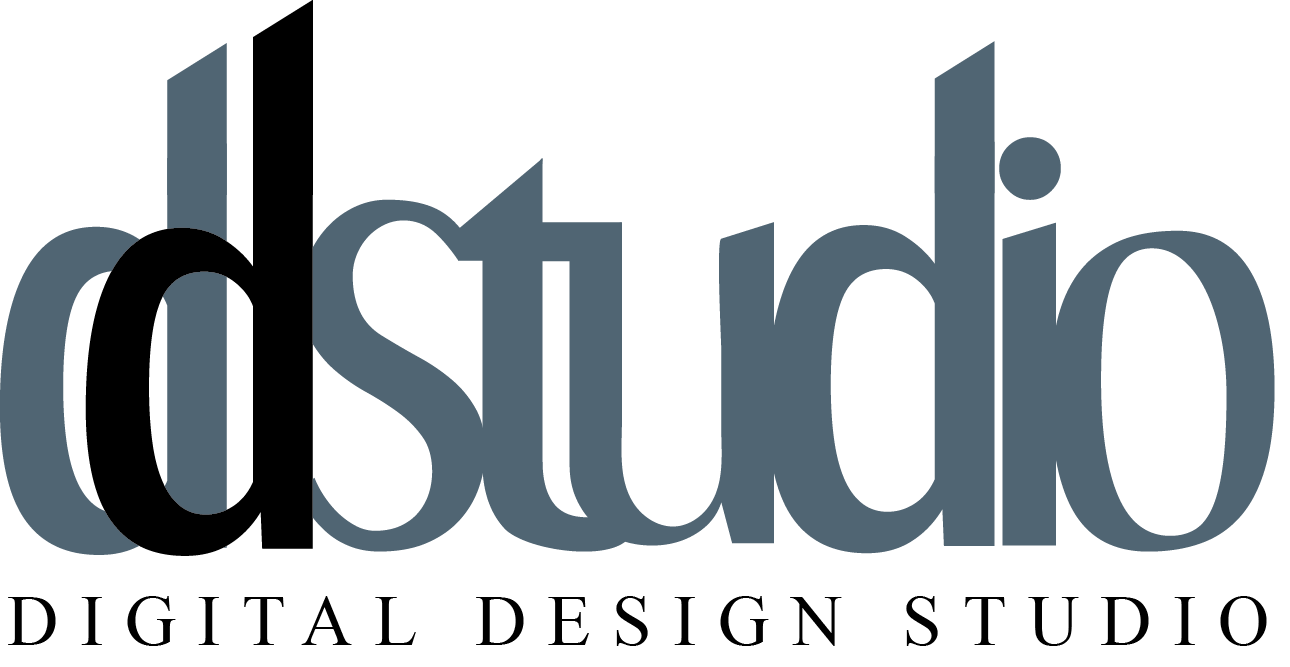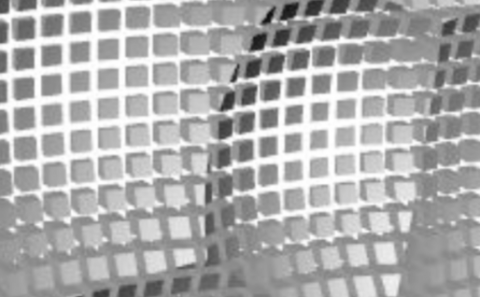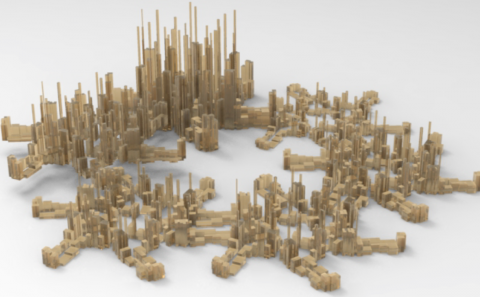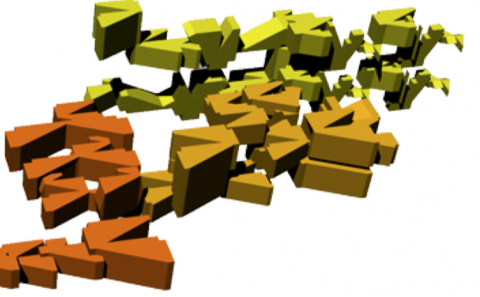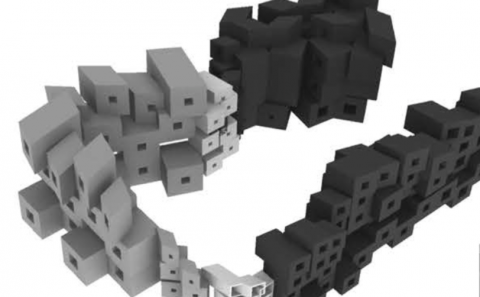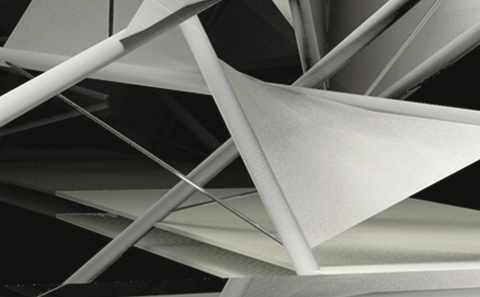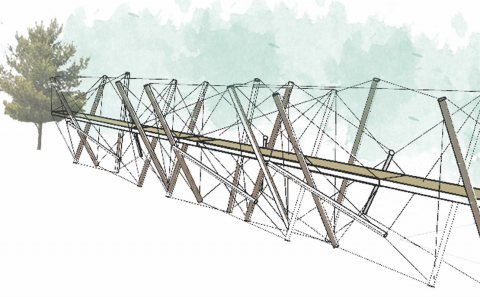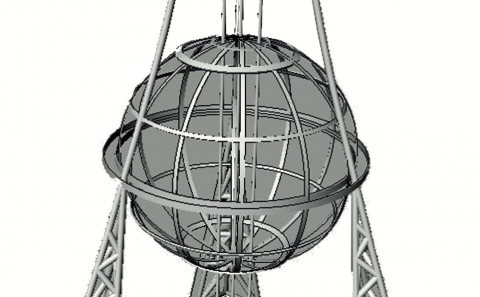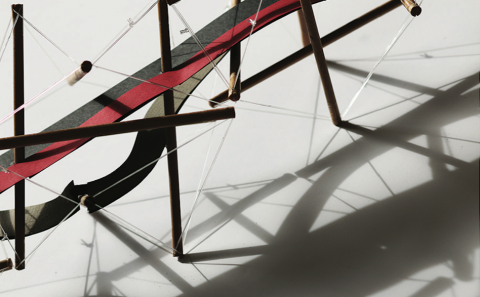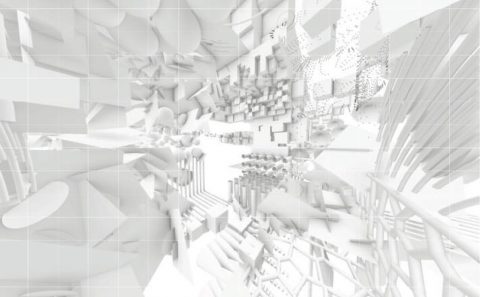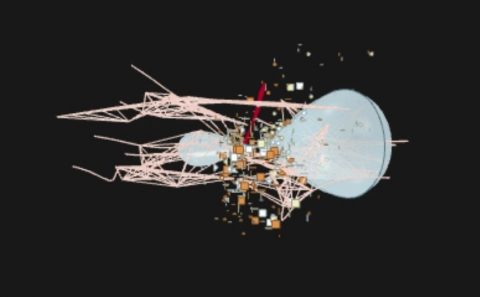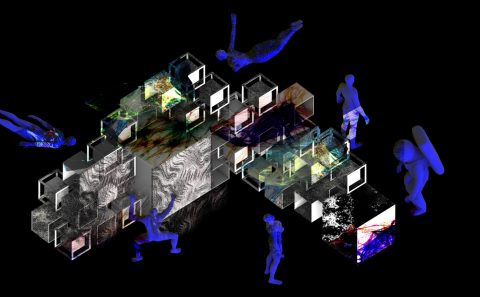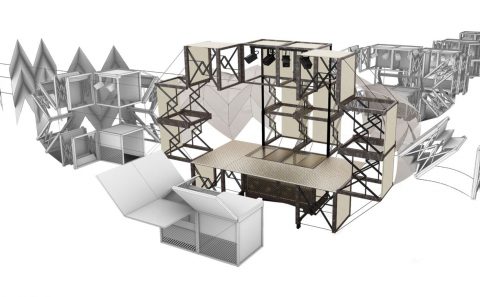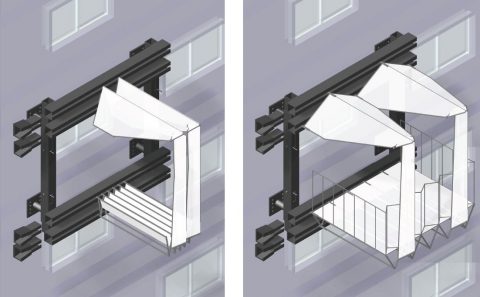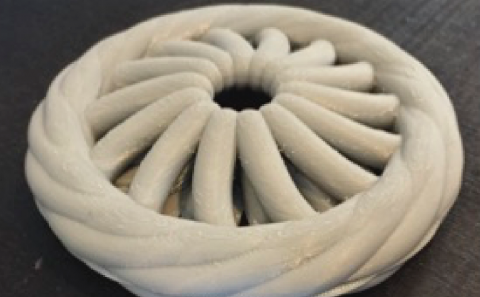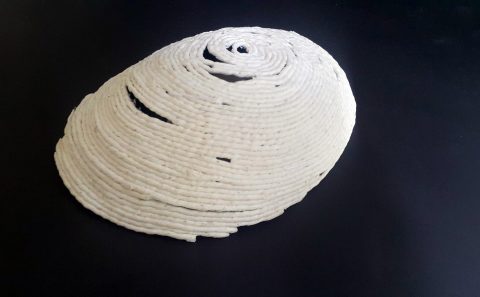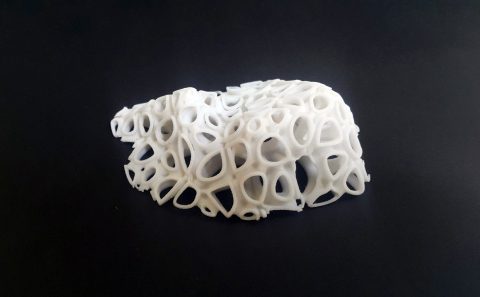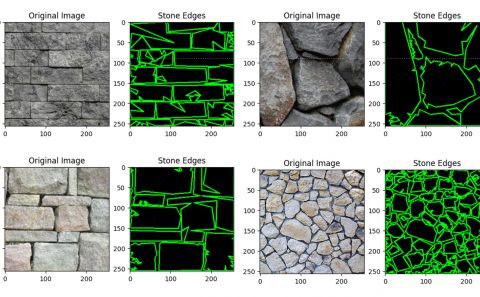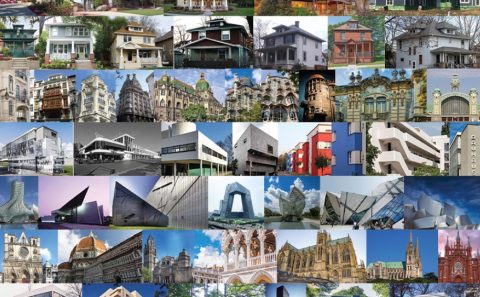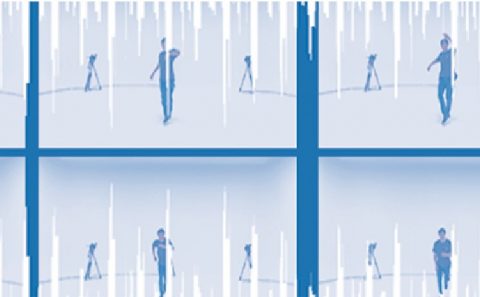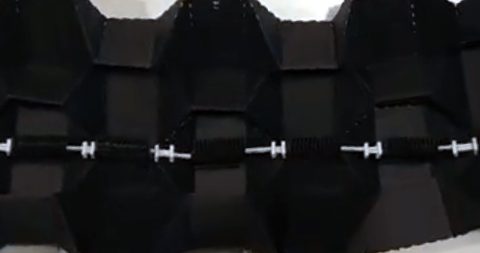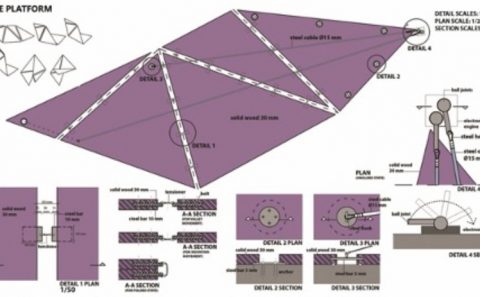Course Objective
This course aims to provide a base for students of architecture to use mathematics in every stage of design process starting from problem definition to final configuration and to be equipped with skills and knowledge to develop so called algorithmic thinking for further understanding of digital media and design.
Course Content
It is aimed to make explicit the relation between architecture and mathematics, thus the role of mathematics is emphasized, with the new age of informatics and so called ´algorithmic thinking´ then computation in design´ questioned in the architectural design.
The concepts of ´sets´ and then ´functions-relations´ are used in throughout the course in order to establish a base for further discussions on mathematical modeling, parametric modeling and computation modeling etc in relation with algorithmic thinking and design computation.
Following this, first issues related to form geometry and structural stability/materials are re-experienced by forcing students to perceive the ´design problem´ as a whole from the very beginning and instead of designing the final product, they are expected to design the process. Isometries, similarities, linear and non linear-systems, fractals etc. are some of the mathematical tools used in this inquiry.
Finally, thinking and designing in n-dimensional space, mapping from one domain to another is studied in relation with mathematics and information technologies.
Learning Outcomes
By the end of this course, students are to be able: – to question the whole design process with the help of some basic mathematics, starting from “problem definition” i.e. input, setting “the constraints”, exploring the relations between functions and forms and optimizing of them i.e. procedures, and to propose final configuration i.e. output. – to develop algorithmic thinking – to question digital media – to cope with multi-dimensional design problems.
Cube for Happiness
n-Dimensional Dance Pattern by Zeynep Elif Yelken
n-Dimensional Dance Pattern by Zeynep Ece Şahin
n-Dimensional Dance Pattern by Sezin Sarıca
Course Objectives
This course aims to provide a complete awareness on the development of structural systems in the course of time; an understanding of how the structural systems and materials determine the form and space in the design and an understanding of basic structure types.
Course Content
A historical survey of the development of modern structural engineering with active participation of the students. Discussion of the merits and sources of modern structural products concerning industrialization and invention of modern structural materials. Study of objective aesthetic values of great builders such as Telford, Eiffel, Roebling, Nervi, Saarinen, Maillart, and Freyssinet. Interrelation between structural design criteria and architectural design principles.
Learning Outcomes
By the end of the course the successful students are expected to:- assess the structural behavior of a building, describe the structures of a given building, – benchmark buildings regarding their structural design, – evaluate pros and cons of a structural system in the given context, – follow up state-of-art structural design technologies, – understand the structural behavior of non-standard complex structures
Course Objective
Students are to be expected to understand the principles of room acoustics and to be able to implement their knowledge in designing spaces such as concert halls where acoustics has a primary importance.
Course Content
It is aimed to explore the interdisciplinary science of designing concert halls and understanding the concert experience. A collective view of concert hall design as a fusion of the arts and sciences-physical acoustics, architectural design and engineering, auditory psychology, and musical performance is introduced. Interwoven themes of music, architecture, audience and acoustics are investigated.
Learning Outcomes
Students will be equipped with basic knowledge to design and analyse the acoustics of enclosed spaces for further acoustical evaluations
Course Objective
This course provides basic knowledge in understanding computational design; an understanding of new architectural geometries; an understanding of digital media as a design medium rather than a medium for representation; familiarity with fabrication technologies
Course Content
A design research studio. Architectural representation medium will be questioned as an architectural thinking environment. A workshop on abstraction and folding techniques in model making. Relation between model making and digital thinking. Introducing an high-end software. Designing thematic and conceptual environments to reveal the enriching relation between the digital and tectonic worlds.
Learning Outcomes
By the end of the course the successful students are expected to:- follow up state of art computational technologies, – develop parametric design models, – use at least one parametric design software, – design the design process in an algorithmic way, -use at least one fabrication technology in a competent way
Course Objective
This course provides knowledge on advanced themes and topics of digital environment, different computational design approaches, complex parametric design models, complex representation techniques like animations
Course Content
An advanced design research studio. An innovative consciousness will be developed for advanced themes and topics of digital environment. Themes and topics will differ in each semester. Architectural thinking and space in relation to digital environment will be further elaborated and discussed through a design project.
Learning Outcomes
By the end of the course the successful students are expected to:- follow up state of advanced computational technologies, – learn any parametric design software, – propose complex design models, – integrate several soft-tools into their design process, – analyze the performance of their design, – explore fabrication technologies
Course Objective
At the end of this course, it is first expected that: students will understand the close relation between CAD and CAM;the concepts of precision and reliability; will gain awareness on the cutting edge design/ fabrication technologies; will further explore fabrication technologies;.
will understand the role of CAM in realizing the complex forms
Course Content
Advanced use of computational models in the architectural design process, use of CAD/CAM in exploring new forms, structures, materials, new soft tools transforming the design process, ability to deal with complexity and precision of solid models, making of complex forms, understanding how the act of making (fabrication/manufacturing) by CAM determines the transition of CAD model from virtual (immaterial material) space to physical (material), customization of fabrication, exploration of various advance fabrication techniques to point out how these techniques effect the end product (from form to structure, from material to performance).
Learning Outcomes
By the end of the course the successful students are expected to: -be able to follow up state-of-art CAD/CAM technologies, -be able to choose proper fabrication technology for their design, be able to choose proper material for the related CAM technology, -be experienced on cutting, milling, printing and molding technologies, -be able to customize the design regarding to CAD/CAM technology
The course aims to develop an understanding of machine learning in general terms and its potential relation with computational design and architecture. In this course, firstly the notions such as function, parameter, variable, algorithm, data, problem-space, dimension and features are discussed in relation with design disciplines. The discussion is elaborated with basic introduction to probability and optimization theory and corresponding methods to form a basis for machine learning algorithms. Thereafter, the traditional machine learning strategies, models and algorithms are exemplified with their uses in architecture. Followed by the hands-on tutorial for machine learning implementations in a visual programming language, the students are expected to complete a term-project which focuses on a particular problem in the field of architecture by means of a machine learning algorithm.
Comparative Analysis of Image Classification with Colored and Greyscale Sata
Masonry Wall Classification
Architectural Style Prediction Model
Un/rehearsed Compositions
This is an experimental computational design research couese. This course outlines the basic knowledge on nature-informed computational design which is a rapidly developing approach not only in architecture but in many disciplines. In this course along with many well-known approaches, some of the significant examples will be studied in the context of data and act of modelling which are the state-of-art discussions of the computational design today. By conducting a hands-on project and providing a research paper on project, it is aimed to enable students to obtain not only the targeted knowledge and skills, but also the critical point of view to the field.
Course Content
This is an experimental computational design course. This course outlines the basic knowledge on folding in the state of art kinetic, responsive and resilient systems in architecture. In this course, along with mathematics of folding, computational design techniques will be employed to explore not only the mechanisms in digital environment but also in physical one. By conducting a series of hands-on project and providing a research paper on the project, it is aimed to enable students to obtain the targeted knowledge and skills.

